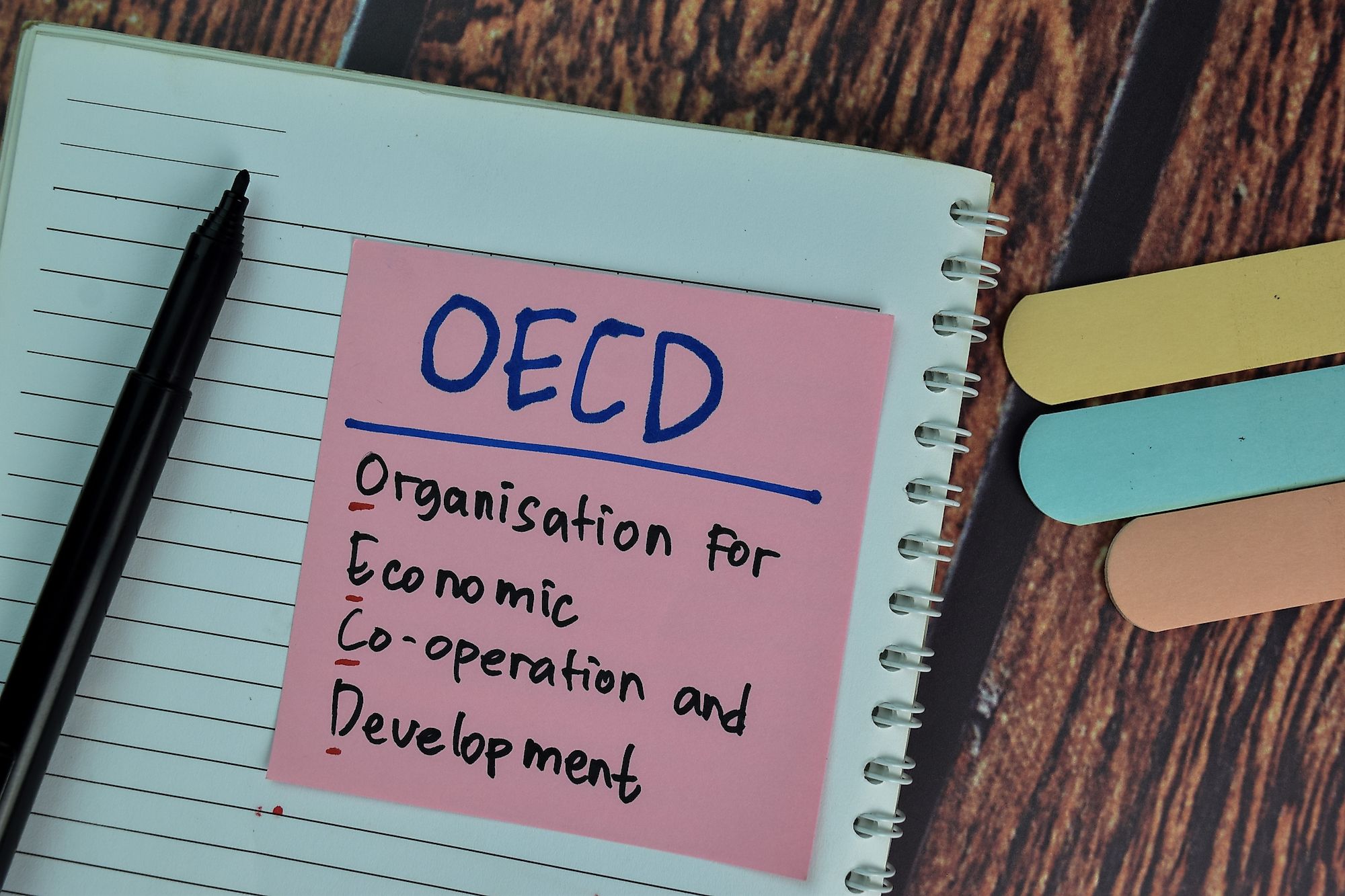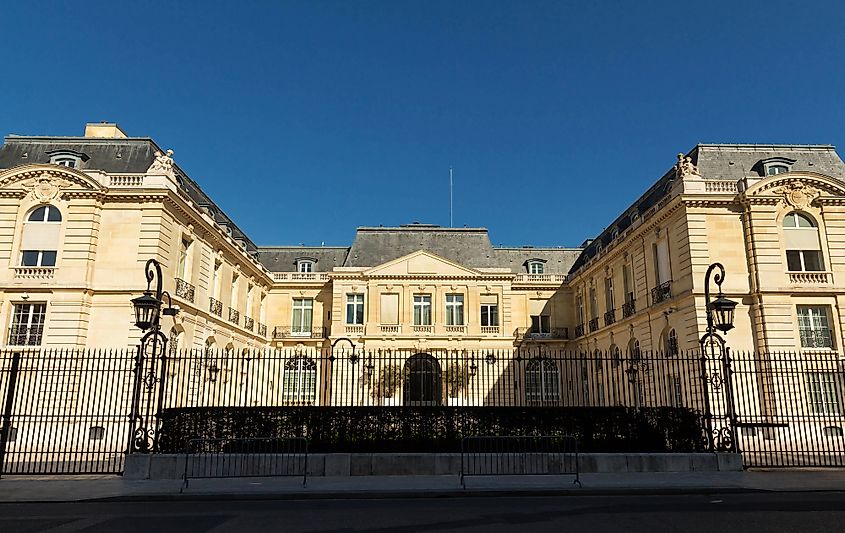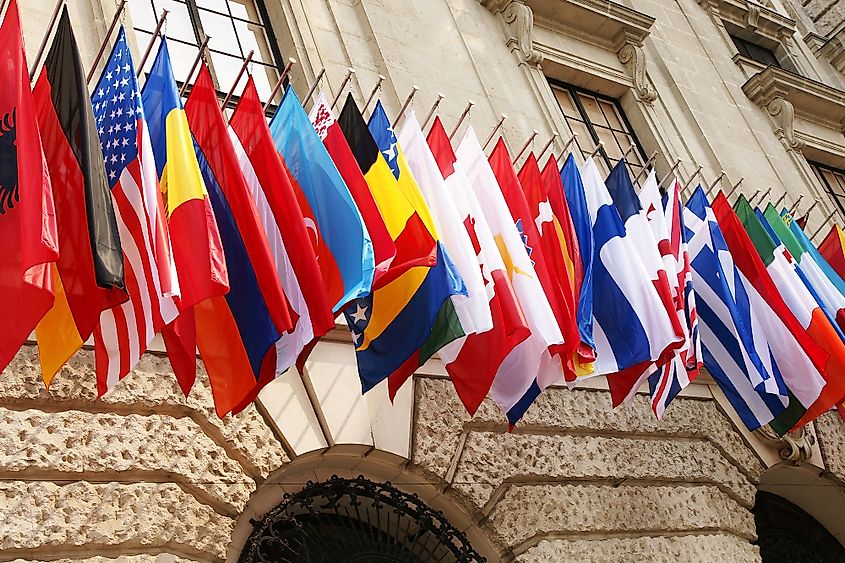
OECD Countries
The OECD, which stands for Organization for Economic Cooperation and Development, is an international governmental organization with 38 member countries. According to the OECD website, the goal of the organization is “to shape policies that foster prosperity, equality, opportunity and well-being for all.” The organization, which is often thought of as a think-tank or monitoring group, provides assistance in a number of fields, including economic performance, job creation, education, the environment, tax policies, and social policies. It is also dedicated to establishing evidence-based international standards. The OECD has its headquarters in Paris, France.
History Of The OECD

After World War II, the victorious Allied Powers concluded that the solution to building a new peace lay in cooperation and reconstruction rather than simply punishing the losers of the conflict, as was done after the First World War. The OECD was originally known as the Organization for European Economic Cooperation (OEEC). It was founded in 1948, three years after WWII ended. Its primary task was to implement the Marshall Plan, the US-backed plan to reconstruct Europe and revive the continent’s economies following the devastation of WWII. It also had the goal of making the countries of Europe recognize their economic interdependency, eventually convincing the leaders of Europe that the integration of their nations’ economies was in their best interests. Thus, the OEEC provided the motivation that ultimately led to the creation of the political and economic alliance now known as the European Union. In 1960, upon completing the implementation of the Marshall Plan, the United States and Canada joined the OEEC, which was renamed the Organization for Economic Cooperation and Development.
Structure Of The OECD
The OECD Council is the highest decision-making body in the organization. It is composed of representatives of member countries and the European Commission, which is one of the central organs of the European Union. The Council is chaired by the Secretary-General of the OECD, and decisions are based on consensus. Reporting to the Council are numerous committees and the secretariat. The committees bring together experts and working groups that are charged with bringing countries together to shape new, innovative policies based on research and experience. Basically, the committees provide the forums for policy ideas to be discussed and reviewed. In contrast, the secretariat is the place where information on policies and programs is collected. The secretariat consists of OECD directorates, which are tasked with collecting data, providing analysis, and formulating recommendations that are passed on to the committees so that the committees can have informed discussions in accordance with the OECD Council’s mandate.
Membership Of The OECD

As previously mentioned, the OECD has 38 member states. Among these states are the most developed and most powerful economies in the world, including the United States, Japan, France, Germany, Italy, Canada, and the United Kingdom, all of which are also part of the Group of 7 (G7). The organization also includes smaller countries such as Denmark, Austria, Belgium, and Luxembourg. Although most of the OECD membership consists of countries with mature, developed economies, there are a few members that are less developed, such as Columbia, and Mexico.
The commonality among the OECD member states is that they are all democratic countries with free market economies, which is why a country like China, despite having the world’s second biggest economy, is not allowed to join the group. China is, however, considered one of the OECD’s Key Partners, along with Brazil, India, Indonesia, and South Africa. Joining the OECD involves a long and complicated process. A country must be reviewed by different committees that are part of the OECD. It has to conform to OECD instruments, standards, and benchmarks. A country that wants to join the OECD must also be willing to reform its economy so that it meets the organization’s standards in certain fields, including corporate governance, anti-corruption, and environmental protection. Once a country has been assessed by the OECD, the organization’s Council takes a unanimous decision on whether or not to grant membership.
OECD Member Countries
| Country | OECD Membership Date |
|---|---|
|
Australia |
June 7, 1971 |
|
Austria |
September 29, 1961 |
|
Belgium |
September 13, 1961 |
|
Canada |
April 10, 1961 |
|
Chile |
May 7, 2010 |
|
Colombia |
April 28, 2020 |
|
Costa Rica |
May 25, 21 |
|
Czech Republic |
December 21, 1995 |
|
Denmark |
May 30, 1961 |
|
Estonia |
December 9, 2010 |
|
Finland |
January 28, 1969 |
|
France |
August 7, 1961 |
|
Germany |
September 27, 1961 |
|
Greece |
September 27, 1961 |
|
Hungary |
May 7, 1996 |
|
Iceland |
June 5, 1961 |
|
Ireland |
August 17, 1961 |
|
Israel |
September 7, 2010 |
|
Italy |
March 29, 1962 |
|
Japan |
April 28, 1964 |
|
South Korea |
December 12, 1996 |
|
Latvia |
July 1, 2016 |
|
Lithuania |
July 5, 2018 |
|
Luxembourg |
December 7, 1961 |
|
Mexico |
May 18, 1994 |
|
Netherlands |
November 13, 1961 |
|
New Zealand |
May 29, 1973 |
|
Norway |
July 4, 1961 |
|
Poland |
November 22, 1996 |
|
Portugal |
August 4, 1961 |
|
Slovakia |
December 14, 2000 |
|
Slovenia |
July 21, 2010 |
|
Spain |
August 3, 1961 |
|
Sweden |
September 28, 1961 |
|
Switzerland |
September 28, 1961 |
|
Turkey |
August 2, 1961 |
|
United Kingdom |
May 2, 1961 |
|
United States |
April 12, 1961 |
The Work Of The OECD

The work of the OECD consists of three tasks. The first task is informing people. The organization publishes a multitude of reports and statistics. In fact, on a yearly basis, the OECD publishes more than 500 major reports and country surveys, not to mention 5 billion data points, and hundreds of policy briefs, articles, and digital content on policy issues. The group bills itself as one of the world’s most trusted sources for comparable statistics, data analysis, and policy analysis. All of these resources are used worldwide by policy makers, the media, and researchers.
The second task of the OECD is to influence people. To this end, the organization gathers a whole range of partners together to meet and discuss possible solutions for certain issues. These partners consist of representatives of governments, parliaments, business, labour, non-governmental organisations, and academia. The OECD itself hosts around 4,000 conferences and seminars each year, but experts affiliated with the organization are also present wherever debates on policy are taking place. The largest event that takes place under the auspices of the OECD is the annual OECD forum, which has more than 3,500 participants each year.
The third task of the OECD is to set standards in collaboration with member countries. These standards range from legally binding instruments, such as the 1997 Anti-bribery Convention, to recommendations designed to guide policy makers towards best practice on a host of issues, like consumer protection, chemical testing, responsible business conduct, and environmental protection. In fact, the OECD has created more than 450 international standards, including conventions, recommendations, guidelines, and declarations over the past 55 years.
One of the organization’s most recent achievements has been an agreement on a minimum global corporate tax. In October 2021, the OECD helped negotiate a landmark deal that will commit countries to charging multinational enterprises (MNEs) a minimum corporate tax rate of 15% by 2023. This arrangement was agreed upon by 136 countries and jurisdictions representing more than 90% of the world’s Gross Domestic Product (GDP). It is estimated that this agreement will see an additional US$ 125 billion go into the coffers of governments around the world, which can use this money to improve the socio-economic conditions of their people. This agreement also lessens the possibility of corporate giants relocating their revenues to other jurisdictions where corporate taxes are less or non-existent in order to avoid paying taxes in their home jurisdictions.











